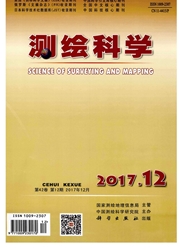

 中文摘要:
中文摘要:
针对传统的统计学方法无法有效刻画居民收入空间格局演变的不足,该文提出了一种将数理统计与空间统计相结合的方法。采用探索性空间数据分析(ESDA)方法,研究了1989年—2011年苏中苏南地区县域单元城镇居民人均可支配收入的变化,较好地描述了收入差异的时序变化和空间格局演变特征。研究发现:县域单元的城镇居民人均可支配收入的绝对差异逐年增大,相对差异呈阶段性波动增大;同时,城镇居民人均可支配收入呈高度的空间自相关,收入水平相似的单元在空间上集聚,苏南处于高值簇,热点区聚集;苏中处于低值簇,冷点区聚集;此外,城镇居民人均可支配收入增长空间格局不稳定,冷热点区切换频繁,冷热点区呈高度集聚,其他类型区域的分布态势减弱。
 英文摘要:
英文摘要:
Aiming at the shortcoming that traditional statistical methods cannot effectively depict the spatial pattern evolution of resident income,this paper proposed a method which combined mathematical statistics and spatial statistics.In this paper,exploratory spatial data analysis(ESDA)was used to research the change of urban disposable income per capita at county level from 1989 to 2011in middle and south Jiangsu province and the sequential variation and spatial pattern evolution characteristics of income disparity were described.It was found that the absolute discrepancy of urban disposable income per capita at county level was increasing year by year and the relative discrepancy revealed the periodic fluctuation increasing trend.Meanwhile,the level of urban disposable income per capita showed a strong trend of spatial auto-correlation and the similar units cluster strongly in space.South of Jiangsu province was at high value cluster,with the hot spot regions agglomerate in there.The middle of Jiangsu province was at low value cluster,with the cold spot regions gather in there.In addition,the growth spatial pattern of urban disposable income per capita was unstable with hot-spots and cold-spots areas switching frequently,and they presented a high concentration situation,but regional distribution situation of other types were gradually weakened.
 同期刊论文项目
同期刊论文项目
 同项目期刊论文
同项目期刊论文
 期刊信息
期刊信息
